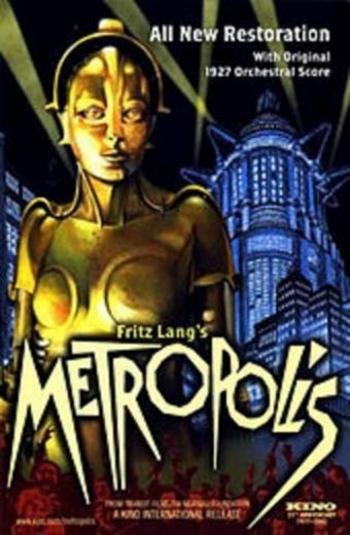
Filmmakers and essential films: Fritz Lang and Metropolis
Dear @AdSactly readers, I want to start with this post a new series about film directors and capital films of the history of cinema, which a person interested in this artistic field should not ignore. I will try to follow it up in some chronological way, highlighting each time a filmmaker and one of his films.
We'll start with Fritz Lang, who scholars place in the artistic stream called Expressionism.
What was Expressionism?
Expressionism was a European aesthetic movement that arose at the beginning of the twentieth century, which had a greater boom in Germany; this movement reached greater relevance in the plastic arts and cinema, but also had important manifestations in photography, theater, architecture, dance and music. Along with French "Fauvism", it is considered the first movement of the artistic avant-garde.
The term "Expressionism" was introduced by Herwarth Walden from 1910, when he founded the magazine Der Sturm (The Storm).
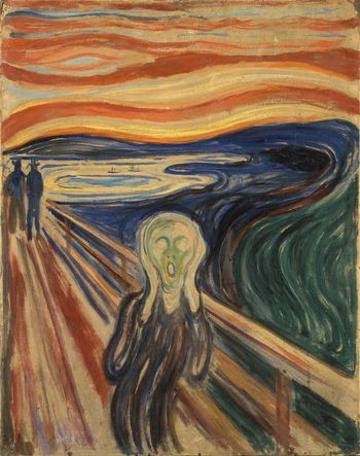
It was a heterogeneous movement, which emerged as a reaction to the Impressionism of the late nineteenth century. While Impressionist artists set out to capture in their work what external reality produced through perception, expressionists postulated a more personal and intuitive art, where the artist's inner vision - "expression"- predominated over the descriptive capture of reality - "impression"-. The artist projects himself, expressing his emotions and feelings. In this sense, he presents a "deformed" vision of reality and even his pessimistic and rebellious side, predominant in the pre or post-war environment.
German expressionist cinema
Expressionism reached the cinema after First World War, and developed further between 1919 and 1928. It was mainly influenced by the artists of Die Brücke (The Bridge). As can be seen in his films, the scenic spaces were made up of distorted perspectives, diagonal streets, inclined and almost ruined houses, luminous effects of lanterns, as if they were "vivified drawings", as one of his ideators would say. With this use of deformations of reality the filmmakers tried to show the state of mind of characters, often disturbed, as can be seen in Dr. Caligari and Nosferatu, the first vampire of cinema. Characters played by actors with exaggerated make-up, extravagant costumes and forced or immobilised postures.
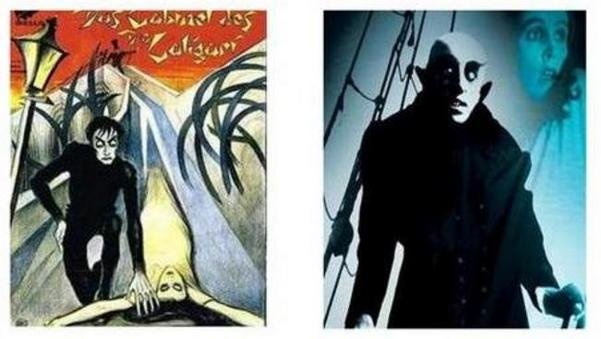
The themes of expressionist cinema are influenced by the subgenres of fantasy and terror. Such manifestations reflected the anguish for social and political imbalance.
The development of expressionist cinema in Germany was favored by a film industry that took more strength from 1913, when they began to make productions of higher artistic quality, with the use of outdoor spaces and incorporation of better sets, in addition to the advance in lighting and editing.
The most representative films of this movement were The Cabinet of Dr. Caligari by Robert Wiene (1919), The Golem by Paul Wegener (1920), Nosferatu: a symphony of horror by Friedrich Wilhelm Murnau (1922) and, in the last stage, Metropolis by Fritz Lang.
Fritz Lang, the great architect of cinema
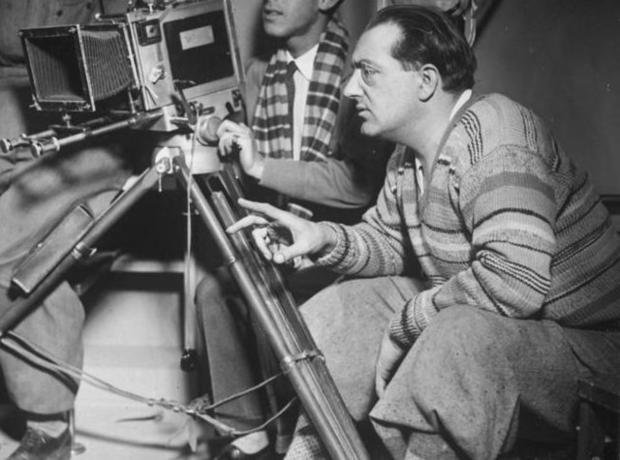
Fritz Lang was born in 1890 in Vienna into a bourgeois family. From childhood he showed a taste for art, especially painting; he studied architecture, but did not finish it. After his long journey through several countries in Europe and Asia, he settled in Paris, where he became interested in cinema, which, unlike painting, allowed him to show a sequence of movements and actions. He left Paris in 1914 due to the declaration of the First World War. He joined the Austro-Hungarian army; wounded in 1917, he was retired to a military hospital in Vienna, where he began to write film arguments that he sold. The disappointment suffered when seeing the results of the realizations made with his first works motivated him to begin as a director of his own films.
In 1919, in Berlin, he directed several cinematographic projects. They even proposed to him the direction of the film The Cabinet of Dr. Caligari, which although he did not carry out proposed ideas on the style of the film that were used, without giving him credit in the final editing. Then he will use them in Dr. Mabuse, a police film that was censored in Germany and Denmark due to the use of "exaggerated realism", as there were street conflicts linked to political conflicts.
In 1927, he made the film Metrópolis, written by Thea von Harbou, his wife at the time. Metropolis is perhaps Lang's film with the greatest accumulation of expressionist themes and scenes, mixed with other romantic and avant-garde traits. There are several thematic topics of an expressionist nature, especially related to his social concern; expressionism is also present in the dramatic nature of the staging, both in the work of the actors, the architecture and the lighting.
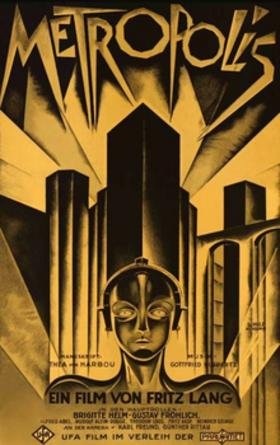
In 1931, Lang made his first sound film: M. In 1933, he was summoned by Goebbels, propaganda minister in National Socialist Germany, who told him that Hitler wanted him to direct a Nazi film. But Lang, totally opposed to Nazism, decided to leave Germany for Paris, leaving his wife, who was affected by Nazi ideas.
Then he traveled to Hollywood hired by Metro-Goldwyn-Mayer. In 1936 he managed to film Fury. He returned to Germany in 1958. In 1960, he made his last film, The diabolical Dr. Mabuse, in which he manifested the danger that society had of annihilating itself. His achievements were characterized by social criticism and reflection on contemporary man.
In 1963, he was appointed President of the Jury at the 17th Cannes Film Festival. He died in 1976, at the age of 86, in Los Angeles, United States.
Metropolis
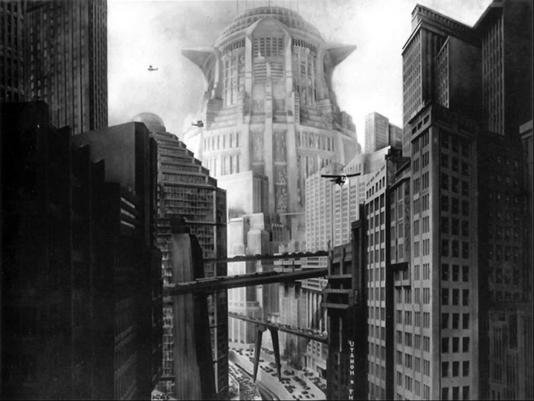
Considered a masterpiece of German expressionist cinema, but even more a milestone in the development of universal cinema. It was premiered on January 10, 1927 in Germany. It was one of the most expensive productions in the origins of cinema, but it turned out to be an economic failure. After several cuts and modifications due to censorship and economic convenience, it was re-released in the same year (1927).
In 2001, it was added to the list of the Memory of the World Register, after undergoing several restorations, in which world-class film libraries participated. It is the first film document to appear on this list.
In 2008, the researcher Fernando Martín Peña found a copy in Buenos Aires (Argentina) in 16 mm format, which shows 26 unpublished minutes since its initial release. Although it is not the complete work that was projected in Germany in 1927, it is the version closest to being one.
As a film production, it is one of the main artistic works in the history of cinema. It involved a lot of extras, many feet of film were shot and its filming lasted about a year. It used innovative techniques for the time, and has a fantastic attribute of the highest degree. Its scenography (skyscrapers inspired in New York, which proposes unusual landscapes, is a daring artistic elaboration, which together with the effects of lighting, framing and editing, make up an exceptional work.
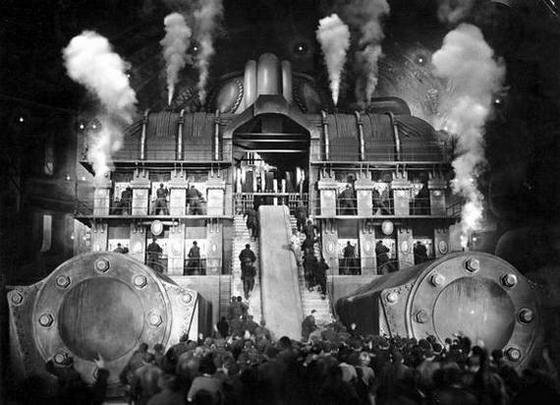
Metropolis is a science fiction film (from the so-called "silent cinema") that represents a futuristic urban dystopia. Let's look at its argument in a nutshell:
In 2026, there is a luxurious city called Metropolis, created and directed by Joh Fredesen. It - and those who enjoy it - exists thanks to a multitude of workers who work in miserable conditions in a kind of underground world. One day the son of its creator, Freder Fredesen, meets Maria, a young and beautiful worker who defends the workers, with whom he falls in love. By following her, he discovers the situation in which the workers live, and tries to help them.
Fredersen father goes to the scientist Rotwang, who gives the appearance of Mary to the anthropomorphic robot of his invention, while the real Mary is taken prisoner. Maria-robot will manipulate the workers to promote their uprising and thus Fredersen represses them. Rotwang will use the automaton as an instrument of revenge against the president of Metropolis, his son and against the city.
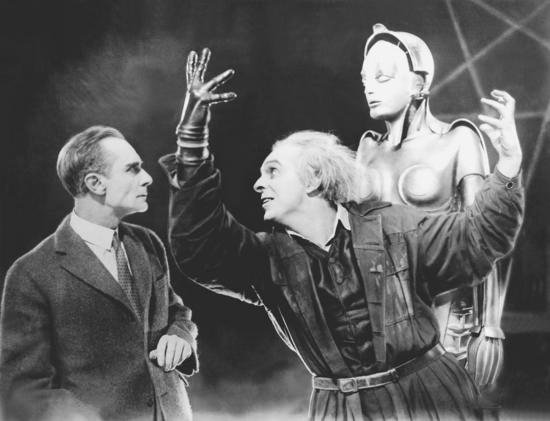
Following the robot's calls, the workers rebel and destroy the "Heart Machine", the source of energy for all the other machines in Metropolis. The destruction of the machine also causes the flooding of the workers' underworld. These desperate workers capture the false Mary, who they set on fire and discover is a robot. Freder confronts Rotwang, who was chasing Maria and dies when he falls from the roof. Maria and Freder meet Fredersen and Grot (city and worker leaders), who reconcile, damage beginning at the beginning of a new society. The final motto will be: "Mediator between the brain and the hand must be the heart", which would be represented by Fredersen, the worker leader and Freder-María respectively.
Criticism has raised a great central issue in Metropolis: the profound duality of the human being, which is presented as the ancestral struggle between Good and Evil, represented visually between darkness and light, so characteristic of expressionist cinema. But the film can highlight a different thematic spectrum: class division, religious fanaticism, the animation of the inorganic, the conflict between the creator and the created, messianic redemption, the subjugation of man by the machine, the fatal woman, the end of the world among others.
Also noteworthy are the influences of Christianity and, to a lesser extent, of Marxism.
Revisiting Metropolis is not a task of cultural archaeology (digging into the past), but a way of appreciating how that magical world of cinema was built, until it became what it is today in an almost overwhelming way. Its values are many: its power in fantasy; its contributions to the development of science fiction; its scenographic architecture, where different styles coexist - in the postmodern way that will be imposed in the second half of the twentieth century - (skyscrapers inspired by New York, Gothic cathedral, building in the medieval way, idyllic gardens, gloomy spaces such as catacombs, cabaret, etc.).); his technical contributions in visual narration (use of the subjective camera), photography and editing; his incorporation of modern technological objects (the first cinematographic robot of relevance); his counter-utopian or dystopian approach; the harbinger of political distortions (National Socialism) and futuristic vision, among others.
His contemporary influences can be seen in films such as Blade Runner, Stars War, *Dark City, Matrix, I, Robot, among others.

Restored Metropolis promotional trailer
There is a complete version of the film which can be accessed at the following link.
Bibliographic references
Sadoul, Georges (2004). *History of World Cinema" (19th ed.). Mexico: Edit Siglo XXI.
Soto, Montzerrat (2014). Análisis crítico de Metrópolis (Online document). Mexico: Universidad Autónoma Metropolitana.
https://es.wikipedia.org/wiki/Expresionismo
https://es.wikipedia.org/wiki/Fritz_Lang
https://es.wikipedia.org/wiki/Metr%C3%B3polis_
Written by @josemalavem
Click on the coin to join our Discord Chat

Witness proposal is here:
Go To Steem Witness Page
In the bottom of the page type: adsactly-witness and press vote.

Use small letters and no "@" sign. Or, click here to vote directly!
Thank you!
@josemalavem, I know I'll enjoy this series you started because you're a film connoisseur and lover, so I'll be very attentive to learn from it. I don't remember seeing this movie, I'll download the link you share with us to see it. Thank you for the great content of your publication. Thanks to @adsactly for spreading.
Downvoting a post can decrease pending rewards and make it less visible. Common reasons:
Submit
I saw Metropolis many years ago about a workshop I did on cinema. I remember that not only because of its colour, the rhythm, the dystopian history, the android steals personalities, the film seemed amazing to me but also disturbing. Very ahead of its time. I remember seeing the marked division between intellectuals and workers and it seemed so far from reality to me. I remember feeling happy with the rebellion, at this moment I don't know if I would feel the same way. I think I must see Metropolis again in the light of some contemporary events. Apart from that: I don't know why I hadn't noticed that my 1984 edition has the Metropolis poster on the cover. As always, excellent work and a very good series you just started, @josemalavem
Downvoting a post can decrease pending rewards and make it less visible. Common reasons:
Submit
Thank you for your persistent visit and comment, @nancybriti. I think Metropolis is a film that can always reserve for us ignored aspects. It's worth to see it again! Well, if your edition of 1984 was illustrated with the Metropolis poster, the designer was very accurate: from one dystopia to another. Greetings.
Downvoting a post can decrease pending rewards and make it less visible. Common reasons:
Submit
@josemalavem, World Of Movie is full of Entertainment and most importantly Cinema travelled a long journey for sure.
But more than Entertainment, many consider Cinema and Movie World more Mysterious.
We don't know where this Journey Of Cinema will move, but one guess is for sure and that is, Technology will going to change the experience for sure.
Posted using Partiko Android
Downvoting a post can decrease pending rewards and make it less visible. Common reasons:
Submit
Indeed, @chireerocks, the world of cinema is very dynamic, but its evolution has had unavoidable foundations: Metropolis is one of the first and main. The dynamism and versatility of cinema undoubtedly depends on the development of technology; it is perhaps the art whose life depends on this field of human activity. Thank you for your comment.
Downvoting a post can decrease pending rewards and make it less visible. Common reasons:
Submit
Welcome and good to know that you are holding the deep Knowledge Bank regarding Cinema. Have a great time ahead.
Downvoting a post can decrease pending rewards and make it less visible. Common reasons:
Submit
Epic classic sci-fi. Crazy to see what they pulled off so long ago without computer effects ⚡
Posted using Partiko Android
Downvoting a post can decrease pending rewards and make it less visible. Common reasons:
Submit
Yeah, it's a classic foundational. If you have not seen it, at the end of the post indicate a link through which you can access the film, @lionsuit.
Downvoting a post can decrease pending rewards and make it less visible. Common reasons:
Submit
I think it would be fun to remember that Queen used Metropolis to film their video of Radio Gaga in 1984. Freddie Mercury was a fan of Lang and the movie, so the band decided to pay a tribute to the genius with one of the most iconic musical videos of the 80’s. God save the queen
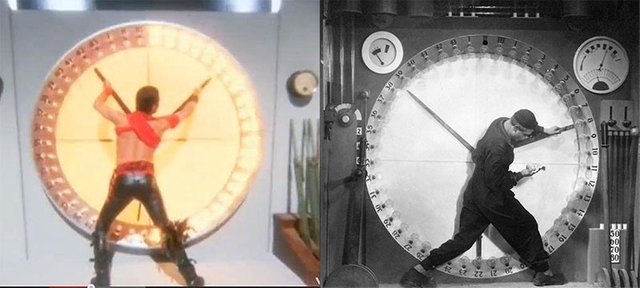
Downvoting a post can decrease pending rewards and make it less visible. Common reasons:
Submit
I appreciate your input, @hermit4576. I knew of that influence, but I only indicated a few in the cinema. *Metropolis has had an influence in several fields, including literature and theatre, for example.
Downvoting a post can decrease pending rewards and make it less visible. Common reasons:
Submit
#wow thats a great post . i like it @adsactly
Downvoting a post can decrease pending rewards and make it less visible. Common reasons:
Submit
Thank you for your valuation, @kingrefat.
Downvoting a post can decrease pending rewards and make it less visible. Common reasons:
Submit
Hi, @adsactly!
You just got a 0.36% upvote from SteemPlus!
To get higher upvotes, earn more SteemPlus Points (SPP). On your Steemit wallet, check your SPP balance and click on "How to earn SPP?" to find out all the ways to earn.
If you're not using SteemPlus yet, please check our last posts in here to see the many ways in which SteemPlus can improve your Steem experience on Steemit and Busy.
Downvoting a post can decrease pending rewards and make it less visible. Common reasons:
Submit
Excellent post, thanks. a hug
Downvoting a post can decrease pending rewards and make it less visible. Common reasons:
Submit
Thank you for your valuation, @yeniyoselinrr.
Downvoting a post can decrease pending rewards and make it less visible. Common reasons:
Submit